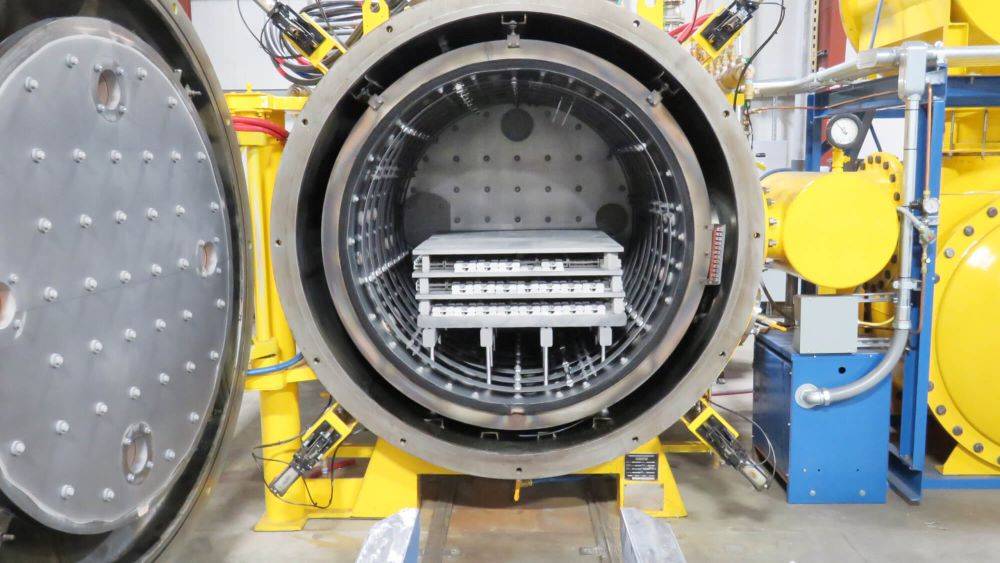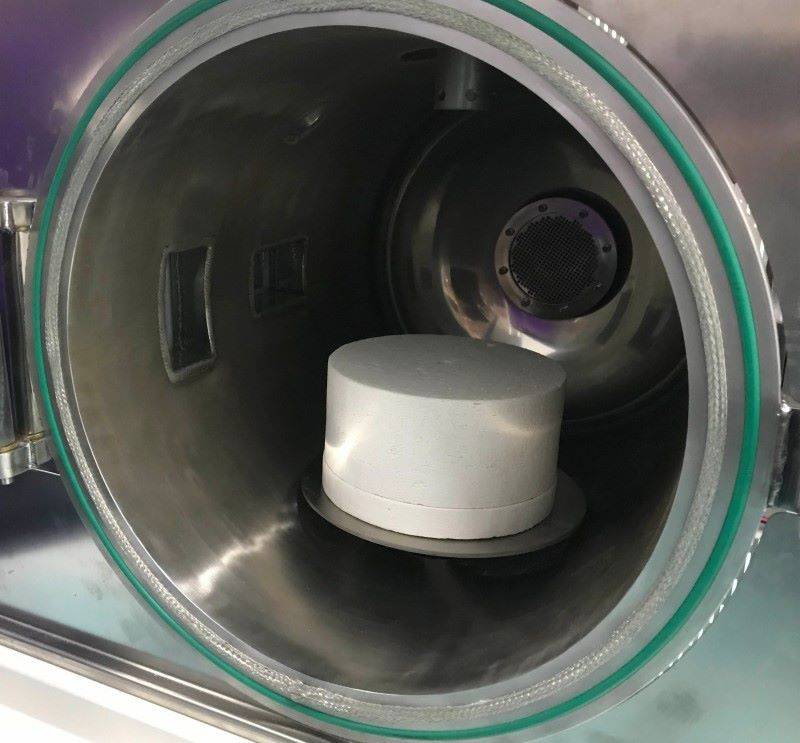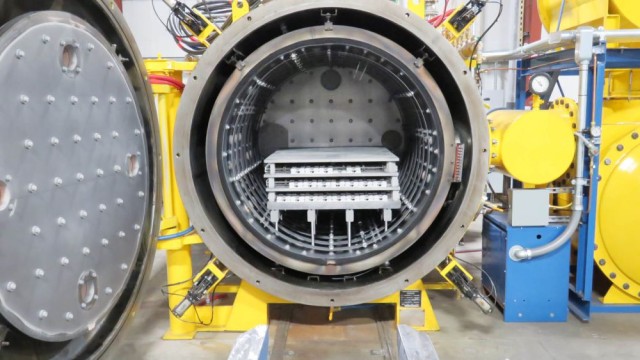Core Functions of Vacuum Hot Press Sintering Furnaces
Vacuum Environment
The vacuum environment within a hot press sintering furnace plays a pivotal role in the material processing cycle. By eliminating atmospheric oxygen, the vacuum setting effectively curtails oxidative reactions, which is crucial for materials that are susceptible to oxidation. This controlled environment not only prevents the formation of oxides but also averts the introduction of other gaseous impurities that could compromise the integrity of the material.
Moreover, the absence of oxygen and other contaminants in the vacuum environment facilitates a cleaner sintering process. This cleanliness is instrumental in enhancing the purity of the final product. The vacuum environment, therefore, not only safeguards against undesirable chemical reactions but also contributes to the overall quality and performance of the sintered material.
In essence, the vacuum environment is a cornerstone in achieving materials with superior properties, making it an indispensable feature of vacuum hot press sintering furnaces.

High Temperature Operation
Sintering furnaces are capable of generating temperatures that can reach several thousand degrees Celsius, creating an environment where the fundamental properties of materials undergo significant transformations. At these extreme temperatures, the kinetic energy of the atoms increases, facilitating the bonding and diffusion between the original powder particles. This process is crucial for the development of strong, dense materials.
The high temperatures within the furnace not only promote the initial bonding but also drive the diffusion of atoms across particle boundaries. This diffusion is essential for the elimination of voids and the subsequent grain growth, which is vital for enhancing the mechanical properties of the final product. As the temperature rises, the material undergoes a series of complex physical and chemical changes that ultimately lead to densification and the formation of a robust microstructure.
Moreover, the high-temperature conditions allow for the activation of certain chemical reactions that are otherwise not possible at lower temperatures. This can include the formation of new compounds or the modification of existing ones, further contributing to the overall improvement in material properties. The ability to achieve and maintain such high temperatures is a testament to the advanced engineering and precise control mechanisms inherent in modern sintering furnaces.
High Pressure Compacting
High pressure compacting in sintering furnaces is a critical process that significantly enhances the densification and mechanical strength of materials. This method involves applying immense pressure, typically ranging from 69 MPa to 830 MPa (10,000 psi to 120,000 psi), to powder particles, forcing them into closer contact. This pressure is often achieved using hydraulic or mechanical presses capable of exerting loads up to 750 tons.
The pressure application can be categorized into two main types: cold pressing and hot pressing. Cold pressing is conducted at room temperature, whereas hot pressing involves elevated temperatures, sometimes as high as 2000ºC (3630 ºF), such as in the pressing of silicon carbide. Hot pressing not only improves compaction but also increases the green compact density and strength compared to cold pressing.
During the compaction process, the powder mixture is filled into a tool cavity and subjected to uniaxial pressure, varying between 200 to 1,500 MPa depending on the desired final density. This pressure is applied repeatedly, with cycles ranging from 400 to 5000 times per hour, ensuring uniformity and mechanical strength in the resulting green part.
The high pressure compacting process is meticulously controlled and monitored using Statistical Process Control (SPC) to ensure the unique characteristics of the part are maintained. This rigorous process control is essential for achieving the desired material properties, ensuring that the sintering process yields high-quality, dense materials with enhanced mechanical strength.

Sintering Process Control
Sintering furnaces are equipped with advanced temperature and pressure control systems that enable meticulous regulation and continuous monitoring of the sintering process. This precise control is indispensable for achieving the desired material properties, ensuring that the final product meets specific mechanical, thermal, and electrical requirements. By maintaining optimal conditions, the risk of overfiring or incomplete sintering is significantly mitigated, which is crucial for the integrity and performance of the sintered material.
The sintering process itself involves several critical stages, each of which relies on accurate control systems. Initially, raw material powders are compacted under high pressure to eliminate voids and ensure uniformity. This pre-sintering step sets the foundation for the subsequent heating phase, where the temperature is carefully regulated to facilitate particle bonding without causing complete melting. During this heating stage, particle diffusion leads to the formation of necks and densification, a process that is closely monitored to prevent any deviations from the desired outcome.
In summary, the vacuum hot-pressing sintering furnace achieves the densification and combination of material powders by providing a vacuum environment, high-temperature operation, high-pressure pressing, and sintering process control, thereby obtaining high-performance sintered materials. The integration of these elements ensures that the final product not only meets but exceeds the expected standards in terms of performance and reliability.
Related Products
- Vacuum Hot Press Furnace Machine Heated Vacuum Press
- Vacuum Hot Press Furnace Heated Vacuum Press Machine Tube Furnace
- Vacuum Heat Treat and Pressure Sintering Furnace for High Temperature Applications
- 600T Vacuum Induction Hot Press Furnace for Heat Treat and Sintering
- Vacuum Dental Porcelain Sintering Furnace
Related Articles
- Materials Science with the Lab Vacuum Furnace
- Comprehensive Guide to Vacuum Hot Press Furnace Application
- Vacuum Laboratory Furnaces in Advanced Materials Research
- Maximizing Efficiency and Precision with Vacuum Graphite Furnaces
- Exploring Tungsten Vacuum Furnaces: Operation, Applications, and Advantages





















